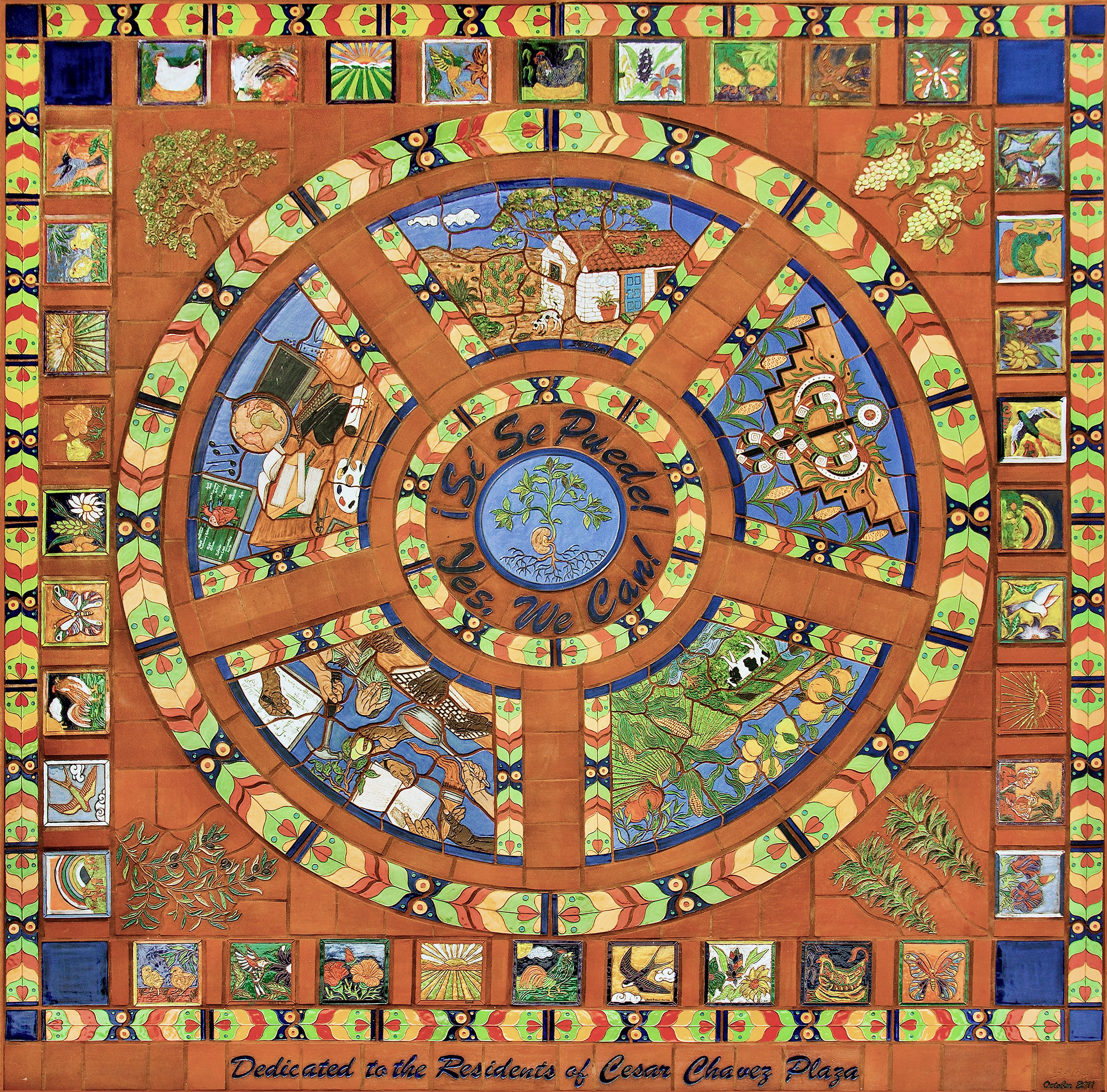 De Colores
De Colores
The “De Colores” Cesar Chavez mural celebrates and honors the legacy of Cesar Chavez and connects it to the vision and innovation behind this important housing project. The design incorporates the concepts of hope, vision, co-operation, and community.
A salient feature of the design is the border of individual tiles surrounding the mural. These tiles were painted by the residents and staff of Cesar Chavez Plaza, and feature imagery from the song "De Colores", whose lyrics joyfully describe the rural landscape in springtime. Because of the simple, rural imagery of this border, the overall feel of the artwork is rooted in the folk-art style. I feel this style is a very appropriate choice for this piece, because, by definition, folk art is art by the people and for the people.
At the center of the mural is a seed, which has germinated and is well on its way to being an established plant; this image represents hope, and optimism for the future. Surrounding the central image are the words, “¡Sí se puede!” “Yes, we can!” This was the slogan for the UFW movement, and it is a very apt slogan to include in this housing development. All of those who worked together to make Cesar Chavez Plaza a reality have shown that Yes, We Can create innovative, beautiful, and successful affordable housing for people.
Placed around these central elements of the design, are five “windows”, or individual murals. When one thinks about the movement led by Cesar Chavez, the thing that is so striking is that the rights that he and others have fought so hard for are so very basic. These small murals depict the five basic rights that Cesar Chavez believed should belong to everyone: The Right to Food, to Shelter, to Education, to Work, and to Health Care. By providing decent housing for people who might otherwise have inferior housing, or even none at all, and with the additional support provided by the staff and programs, Cesar Chavez Plaza is an example of what can be done to help provide some of these rights to members of our community.
The four corners of the mural feature images which symbolize some of the tools that were used by Cesar Chavez and the United Farm Workers’ movement to achieve its goals—tools which, arguably, are necessary for any successful struggle: The Twin Pines represent cooperation; the Oak Tree represents strength and perseverance; the Olive branch represents non-violence, and the Grapes represent the remarkably successful grape boycott, and therefore economic power and strategy.
Finally, the song “De Colores” provides more than inspiration for the imagery in a decorative border that frames this art feature. Originally, “De Colores” was simply a happy children’s song, but it became an anthem for a powerful movement, somehow managing to inspire and unite a large group of people in their struggle to reach a seemingly unattainable goal, and it is still sung during political gatherings, demonstrations, and contemporary movements. Therefore, the border, the song that inspired it, and the residents who created it represent a shared vision, community, and cooperation.